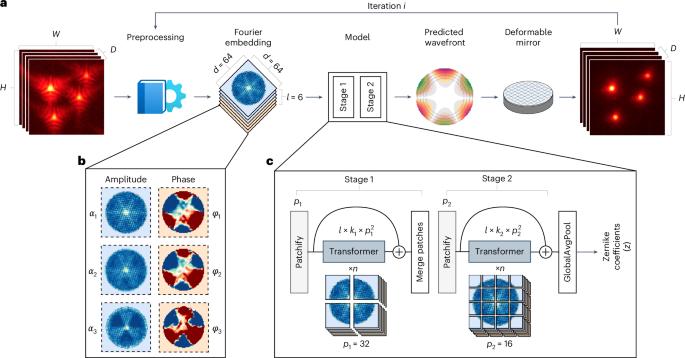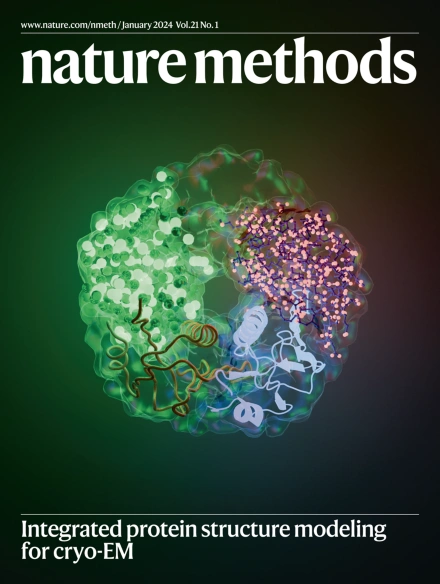基于傅里叶的三维多级变压器用于多细胞标本的像差校正。
IF 32.1
1区 生物学
Q1 BIOCHEMICAL RESEARCH METHODS
引用次数: 0
摘要
高分辨率的组织成像经常受到样品引起的光学像差的损害,从而降低分辨率和对比度。虽然基于波前传感器的自适应光学(AO)可以测量这些像差,但这种硬件解决方案通常很复杂,实现成本高,并且在大视场范围内连续映射空间变化的像差时速度很慢。在这里,我们介绍了AOVIFT(自适应光学视觉傅立叶变压器)——一种基于机器学习的像差传感框架,它建立在一个基于傅立叶域嵌入的三维多级视觉变压器上。与传统架构或真实空间网络相比,AOVIFT可以推断像差,并在点号标记的样本中恢复衍射受限的性能,大大降低了计算成本、训练时间和内存占用。我们在活的基因编辑的斑马鱼胚胎上验证了AOVIFT,证明了它使用可变形镜像或采集后反卷积来纠正空间变化畸变的能力。通过消除对导星和波前传感硬件的需求并简化实验工作流程,AOVIFT降低了高分辨率体积显微镜在不同生物样品中的技术障碍。本文章由计算机程序翻译,如有差异,请以英文原文为准。

Fourier-based three-dimensional multistage transformer for aberration correction in multicellular specimens
High-resolution tissue imaging is often compromised by sample-induced optical aberrations that degrade resolution and contrast. Although wavefront sensor-based adaptive optics (AO) can measure these aberrations, such hardware solutions are typically complex, expensive to implement and slow when serially mapping spatially varying aberrations across large fields of view. Here we introduce AOViFT (adaptive optical vision Fourier transformer)—a machine learning-based aberration sensing framework built around a three-dimensional multistage vision transformer that operates on Fourier domain embeddings. AOViFT infers aberrations and restores diffraction-limited performance in puncta-labeled specimens with substantially reduced computational cost, training time and memory footprint compared to conventional architectures or real-space networks. We validated AOViFT on live gene-edited zebrafish embryos, demonstrating its ability to correct spatially varying aberrations using either a deformable mirror or postacquisition deconvolution. By eliminating the need for the guide star and wavefront sensing hardware and simplifying the experimental workflow, AOViFT lowers technical barriers for high-resolution volumetric microscopy across diverse biological samples. Adaptive optical vision Fourier transformer (AOViFT) is a machine learning-based framework for accurately inferring aberrations and restoring diffraction-limited performance in diverse biological specimens.
求助全文
通过发布文献求助,成功后即可免费获取论文全文。
去求助
来源期刊

Nature Methods
生物-生化研究方法
CiteScore
58.70
自引率
1.70%
发文量
326
审稿时长
1 months
期刊介绍:
Nature Methods is a monthly journal that focuses on publishing innovative methods and substantial enhancements to fundamental life sciences research techniques. Geared towards a diverse, interdisciplinary readership of researchers in academia and industry engaged in laboratory work, the journal offers new tools for research and emphasizes the immediate practical significance of the featured work. It publishes primary research papers and reviews recent technical and methodological advancements, with a particular interest in primary methods papers relevant to the biological and biomedical sciences. This includes methods rooted in chemistry with practical applications for studying biological problems.
 求助内容:
求助内容: 应助结果提醒方式:
应助结果提醒方式:


